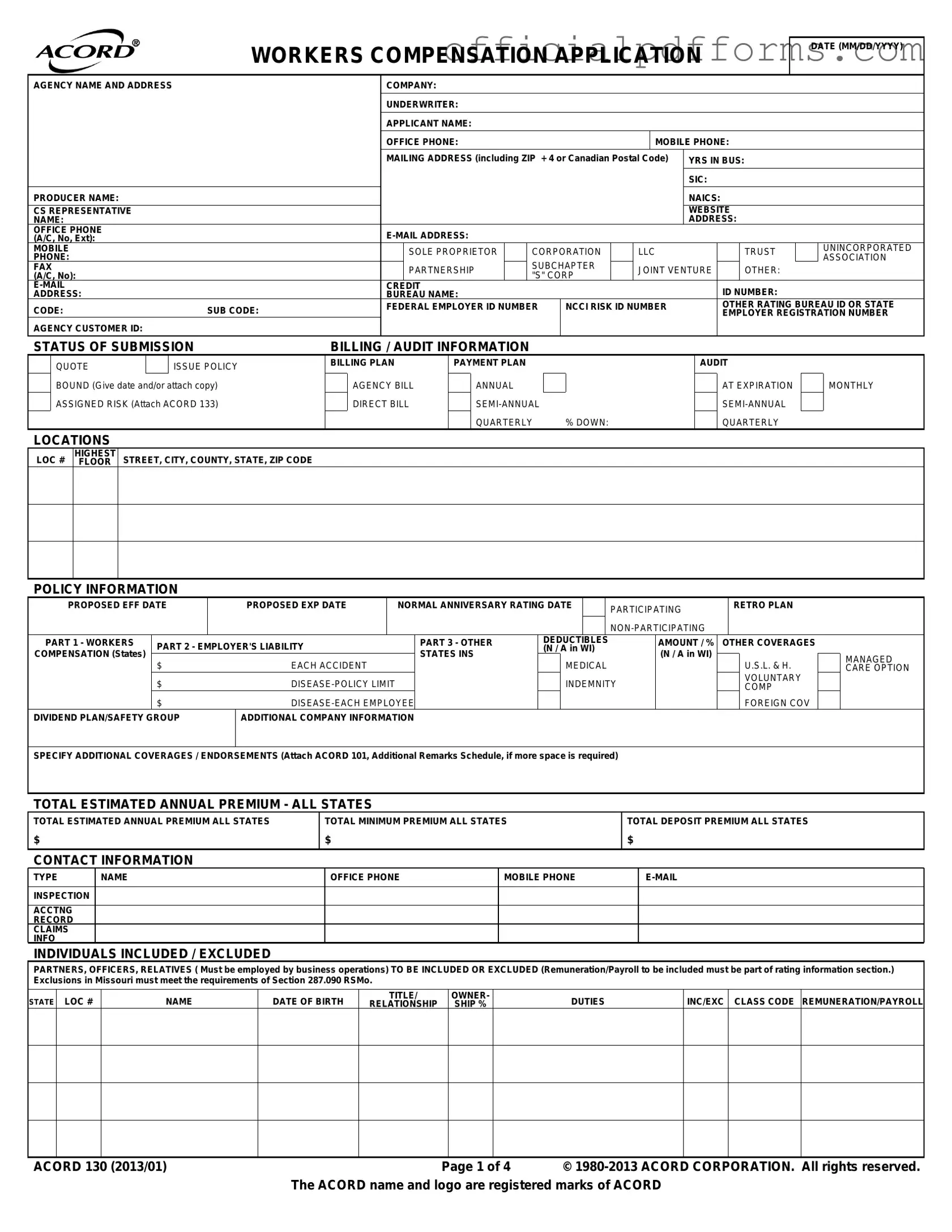The ACORD 130 form is primarily used as a Workers Compensation Application. It collects essential information about a business seeking workers' compensation insurance. This includes details about the business structure, operations, and employee information. Insurers use this data to assess risk and determine appropriate coverage and premiums.
Any business that employs workers and requires workers' compensation insurance must complete the ACORD 130 form. This includes sole proprietors, corporations, partnerships, and LLCs. If your business has employees, regardless of their number, this form is necessary to ensure compliance with state regulations regarding workers' compensation coverage.
The form requires a variety of information, including:
-
Agency name and address
-
Applicant's name and contact information
-
Business structure (e.g., corporation, LLC, partnership)
-
Years in business and industry classification codes (SIC and NAICS)
-
Details about employees, including their roles and remuneration
-
Information about previous insurance coverage and loss history
Providing accurate and complete information is crucial for obtaining the right coverage and premium rates.
The information provided on the ACORD 130 form directly influences your workers' compensation insurance premium. Insurers assess the risk associated with your business based on factors such as the nature of your operations, employee classifications, and loss history. Higher risk businesses may face higher premiums, while those with a strong safety record may qualify for discounts.
If you encounter any questions or uncertainties while completing the ACORD 130 form, it's best to consult with your insurance agent or broker. They can provide guidance and ensure that you fill out the form accurately. Additionally, your agent can help clarify any specific requirements based on your state or business type.
Yes, you can make changes to the ACORD 130 form after submission, but it may require a formal amendment process. If you realize that any information is incorrect or has changed, contact your insurance provider as soon as possible. They will guide you on how to update your application and ensure that your coverage remains valid.
